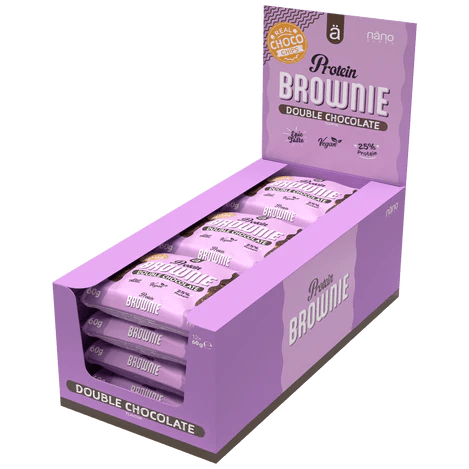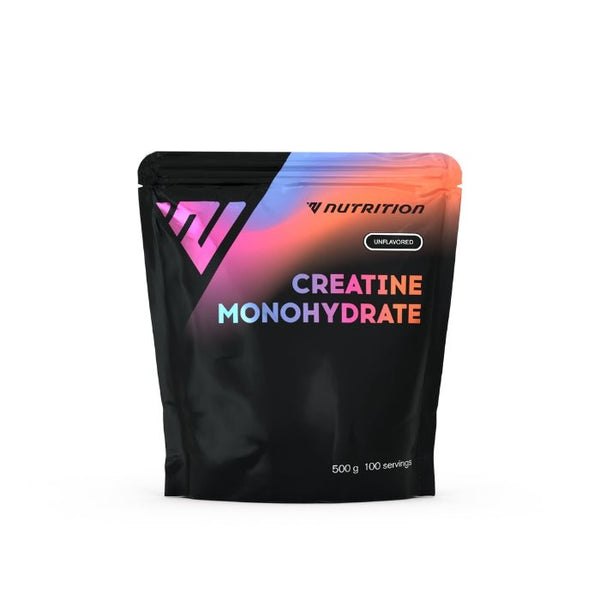Glikomannāns, ko iegūst no konžaka saknes ir vērtīgs šķīstošo šķiedrvielu avots, kas var uzlabot zarnu veselību, normalizēt cukura un lipīdu līmeni asinīs, kā arī palīdzēt citu veselības traucējumu un saslimšanu gadījumos. Tāpat tas var palīdzēt Tev atbrīvoties no liekajiem ķermeņa taukiem un saglabāt slaidu augumu, normalizējot par sāta sajūtu un apetīti atbildīgo hormonu līmeņus.
Lai atbrīvotos no liekajiem ķermeņa taukiem, Tev ir jāēd mazāk. Pavisam vienkārši. Taču, ja Tu ēd pavisam maz, var būt itin sarežģīti uzņemt nepieciešamo šķiedrvielu daudzumu. Šķiedrvielu trūkumus, savukārt, noved pie lielāka izsalkuma, bet lielāks izsalkums nozīmē, ka Tu ēd vairāk.
Ko darīt?
Glikomannāns – šķīstošās šķiedrvielas no konžaka saknes – ir viens no tiem uztura bagātinātājiem, kas atbilst abām iepriekšminētajām prasībām – tas sniedz pietiekami daudz šķiedrvielu, kā arī pilnīgāku sāta sajūtu. Turklāt tas labvēlīgi ietekmē Tavu veselību arī daudzos citos veidos.
Kas ir šķīstošās šķiedrvielas?
Šķīstošās šķiedrvielas ir ūdenī šķīstošs, tā dēvēto, “komplekso” ogļhidrātu (tādu, kuru komplicēto molekulāro struktūru cilvēka organismam ir grūtāk sadalīt) veids. Nonākot saskarē ar šķidrumu, šķīstošās šķiedrvielas veido viskozu želeju. Piemēram, augļu pektīns tiek izmantots, lai biezinātu ievārījumus un līdzīgus produktus, bet ksantāna sveķus lieto kā emulgatoru, piešķirot pārtikas produktiem krējumveida konsistenci.
Šķīstošās šķiedrvielas ir lieliska “barība” baktērijām, tādēļ tās dēvē arī par prebiotiķiem. Mūsu kuņģa-zarnu traktā mītošās baktērijas uzcītīgi fermentē šķīstošās šķiedrvielas, kā blakusproduktus radot vērtīgas uzturvielas... un ne visai vēlamās vēdera gāzes.
Šķīstošās šķiedrvielas ir atrodamas tādos pārtikas produktos kā:
- pupiņas un pākšaugi;
- graudaugi, tostarp auzas, rudzi un mieži;
- atsevišķi augļi, tostarp plūmes/žāvētas plūmes, āboli, bumbieri, ogas un banāni;
- atsevišķi dārzeņi, piemēram, sīpolu ģints, kāpostu ģints, Jeruzalemes artišoki (sakņaugi/bumbuļaugi bieži vien satur daudz šķīstošo šķiedrvielu);
- atsevišķas sēklas, tostarp Ča un ceļteku sēklas.
No konžaka saknes līdz glikomannānam
Konžaka auga (Amorphophallus konjac) sakne tāpat kā daudzi citi bumbuļaugi satur daudz šķīstošo šķiedrvielu. Šīs šķiedrvielas tiek izmantotas glikomannāna (GM) uztura bagātinātāju ražošanā.
Konžaka sakne
Konžaks ir sastopams arī Austrumāzijas virtuvē, bieži vien širataki nūdeļu veidā vai kā želeja, kuru sagriež šķēlītēs un pasniedz kopā ar mērci. Tas gan visbiežāk tiek uzteikts savas želatīnam līdzīgās konsistences, nevis garšas dēļ, jo parasti tas uzņem garšu no citiem produktiem, kuros to termiski apstrādā, marinē vai mērcē.
Sashimi konnyaku (konžaka sašimi)
No konžaka pārtikas rūpnieciski iegūst miltus un pulveri, kā arī tādus galaproduktus kā nūdeles, želejas un pat ledenes, kuras gan uzturā lietot neiesakām.
Kā glikomannāns darbojas?
Lai gan konžaks jau izsenis tika lietots Ķīnā, Japānā un Dienvidaustrumāzijā gan kā pārtikas produkts, gan tradicionāls ārstniecības līdzeklis, rietumu pētnieki par GM labvēlīgo ietekmi uz cilvēka veselību interesējušies tikai kopš 20.gs. 80. gadiem.
Absorbē ūdeni
Konžaka miltiem/glikomannānam vai pulverim piemīt spēcīgas absorbējošas īpašības – tas spēj uzsūkt ievērojamu daudzumu ūdens.
Palīdz mums justies paēdušiem ilgāk
Tā kā GM spēj saistīt tik daudz ūdens un veidot želeju, tas palīdz mums justies labāk paēdušiem. Tas nozīmē, ka varam ēst mazāk, bet justies paēduši ilgāku laiku. Savukārt mazāk uzņemtu kaloriju nozīmē ķermeņa tauku īpatsvara samazināšanās.
Pētījumos, kuros apskatīta GM iekļaušana diētā ar ierobežotu kaloriju patēriņu, konsekventi novērots, ka dalībniekiem tajās grupās, kurās tiek lietots GM, izdodas sadedzināt vairāk ķermeņa tauku, nekā grupās, kurās papildu šķiedrvielas uzņemtas netiek. Vienā no šādiem pētījumiem (Birketvedt GS, et al. 2005. g.) GM grupas dalībnieki 5 nedēļu ilgā laika periodā atbrīvojās vidēji par 0,8 kg vairāk, nekā kontroles grupa.
Sāta sajūta ne vienmēr ir nepārprotama – pilns vēders nebūt nenozīmē, ka cilvēks jūtas paēdis. Kā jau to zina cilvēki, kuri reiz ir ievērojuši kādu diētu, izstiepts kuņģis (piem., liela izdzertā ūdens daudzuma dēļ) ne vienmēr nozīmē, ka jums negribēsies ēst. “Mehāniski” pilns vēders ne visos gadījumos nozīmē “īstu” sāta sajūtu.
Tiesa gan, pētījumā, kurā piedalījās 2. tipa cukura diabēta slimnieki (Grill, 2010. g.), tika konstatēts, ka pēc GM saturošas maltītes samazinās galveno bada signālhormonu (piemēram, grelīna) klātbūtne. Domājams, ka GM “apmulsina” vēdera un smadzeņu receptorus, informējot tos, ka sāta sajūtas sasniegšanai pietiek ar mazāku pārtikas daudzumu.
Labāka ogļhidrātu tolerance un lipīdu profils
Neskaitot fizisku kuņģa piepildīšanu, GM uzlabo arī sāta sajūtu un optimizē ķermeņa tauku rezervju utilizāciju, normalizējot cukura līmeni asinīs un, uzlabojot lipīdu profilu.
Vienā no pētījumiem (Keithley and Swanson, 2005. g.) tika novērots, ka 2–4 g GM dienā uzlaboja dalībnieku rezultātus svara samazināšanā, vienlaikus sniedzot arī citus pozitīvus efektus, tostarp, asinīs esošo lipīdu profilu un ogļhidrātu toleranci, kā arī sāta sajūtu. Organisma spēja optimālāk pārstrādāt cieti saturošos produktus nozīmē normalizētu insulīna jutīgumu, kas, savukārt, nozīmē labāku apetītes kontroli, mazākas izmaiņas asins cukura līmenī un samazinātu tieksmi pēc uzkodām starp ēdienreizēm.
Vieni no pirmajiem atklājumiem attiecībā uz GM (Walsh, 1984. g.) norādīja uz pazeminātu seruma holesterīnu, kā arī ZBL (zema blīvuma lipoproteīnu) holesterīnu. Un, salīdzinot ar vienu no vispopulārākajiem šķīstošās šķiedrvielas saturošajiem produktiem – ceļtekas sēklām, GM sniegtie rezultāti attiecībā uz lipīdu samazināšanu asinīs kopumā atzīstami par labākiem.
Gremošanas sistēmas veselība
Mūsu gremošanas sistēmas veselība, tostarp kuņģa-zarnu trakta motilitāte (kuņģa iztukšošanās spējas) un veselīga bakteriālā flora, ir lielisks vispārējās veselības indikators. Turklāt, jāatzīmē, ka kuņģa-zarnu trakta disbioze jeb baktēriju pārmērīga attīstība/bakteriālās floras nelīdzsvarotība ir cieši saistīta ar aptaukošanos.
Cilvēki, kuri ievēro diētu ar zemu ogļhidrātu saturu, labi zina, cik grūti ir panākt normālu vēdera izeju laikā, kamēr organisms piemērojas pazeminātajam graudaugu produktu un citu šķiedrvielu avotu daudzumam uzturā. Ja tiek uzņemts samazināts pārtikas daudzums, panākt normālu vēdera izeju var būt itin liels izaicinājums.
Daļa cilvēku, kuri ievēro šādas diētas kā risinājumu aizcietējuma problēmai uzturā iekļauj ceļteku sēklu sēnalas vai klijas. Jāatzīst gan, ka šajā gadījumā GM, pateicoties tā sastāvā esošajām šķīstošajām šķiedrvielām, varētu būt labāka izvēle.
Neskaitot regulāru vēdera izeju, kādā pētījumā (Chen, 2006. g.) dalībniekiem grupā, kura lietoja GM, novēroja arī nozīmīgu labvēlīgo bifidobaktēriju, lactobacilli un kopējo baktēriju skaita pieaugumu kuņģa-zarnu traktā. Tāpat tika novērots, ka GM lietošana uzturā veicina zarnu fermentāciju, uz ko norādīja pazemināts pH līmenis fekālijās.
Pumpas
Ir novērots, ka probiotiķi (piemēram, skābēti kāposti, kimči, miso, utt.), lietojot tos kopā ar GM, samazina pumpu veidošanos. Tiesa gan, tos jālieto uzturā, nevis uzklāšanai uz sejas.
Ļaundabīgi audzēji
Neviena pārtikas produkta vai uztura bagātinātāja pārskats nebūtu pilnīgs, neizvērtējot attiecīgā produkta ietekmi uz onkoloģiskajām slimībām. GM labvēlīgā ietekme uz kuņģa-zarnu trakta floru var palīdzēt samazināt resnās zarnas ļaundabīgā audzēja pirmsvēža riska faktorus.
Glikomannāns un drošība
Tā kā GM saskarē ar ūdeni strauji izplešas, ir dokumentēti gadījumi, kad cilvēki ir aizrijušies ar GM pulveri vai GM ledenēm, mēģinot tās norīt sausas. Lai to ilustrētu, atliek vien iedomāties balonu, kurš piepūšas Tavā mutē un kaklā.
Tādēļ GM vēlams uzņemt vai nu pārtikas produktu (piem., širataki nūdeļu vai konžaka želejas veidā jūsu iecienītākajos korejiešu vai japāņu ēdienos), vai arī pulvera veidā, pievienojot to ēdienam vai izšķīdinot, piemēram, piena kokteilī. Tāpat var droši lietot GM kapsulas, taču vienmēr uzdzeriet tām lielu ūdens daudzumu. Neskaitot šo aspektu, GM ir drošs lietošanai uzturā gan pieaugušajiem, gan bērniem.
Sāciet ar mazumiņu
Sāciet ar nelielām GM devām. Klīniskajos pētījumos visbiežāk tiek lietoti vidēji tikai 1–3 grami vienā ēdienreizē. Mēs sākumā iesakām lietot vienu, pavisam nelielu, devu dienā.
Pārmērīga aizraušanās ar GM ēšanu var izraisīt vēdera uzpūšanos, gāzu veidošanos un ar to saistīto diskomfortu.
Konnyaku (konžaka) želeja. To var sagriezt nelielos gabaliņos, vai, piemēram, papildināt ar pētersīļa zariņu.
Kopsavilkums un ieteikumi
GM var uzlabot vairākus gremošanas sistēmas veselības aspektus, piemēram, kuņģa-zarnu trakta motilitāti (t.i., veselīga un pietiekami bieža defekācija) un tajā mītošo labo baktēriju veselību.
GM spēj normalizēt cukura un lipīdu (piem., seruma holesterīna un lipoproteīnu) līmeni asinīs.
Tāpat GM palīdz samazināt ķermeņa svaru, ilgāku laiku saglabājot sāta sajūtu un, iespējams, ietekmējot par apetīti atbildīgos hormonus.
Drošības nolūkos uzņemiet GM kopā ar lielu šķidruma daudzumu.
Konsultējieties ar savu ārstu un noskaidrojiet, vai Tu nelieto kontrindicētus medikamentus un, vai Tev nav nekādu rīšanas problēmu.







